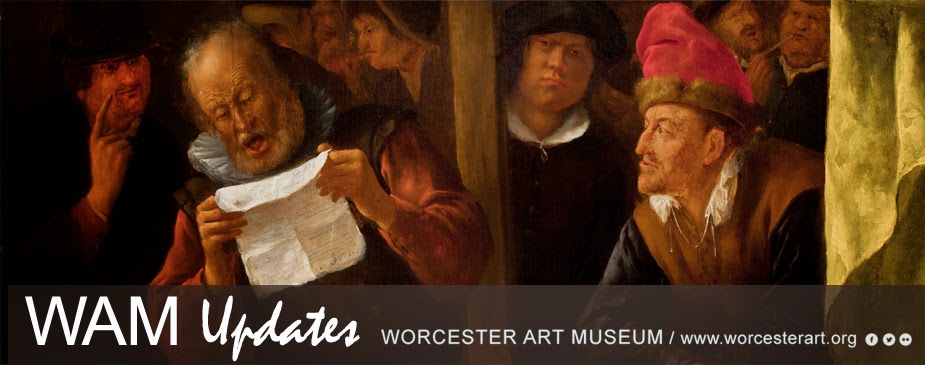 The Peacock Window, completed near the end of his lifetime, is considered John La Farge's most experimental window. Originally, the window was commissioned for a client. However, due to technical challenges surrounding La Farge's signature cloisonné-like technique—in which glass pieces in a copper coil network are fused together—the window was set aside. Fifteen years later, La Farge revisited the window, and it became a personal and experimental project. La Farge was proud of the piece and muses in a letter to a friend that the window is “most curious.” Indeed, La Farge curiously and uniquely weaved multiple techniques. For example, he employed traditional stained-glass techniques, as well as fused glass with organic cracking and texture. He also loosely applied cold paint with a brush, spatula, and even his fingers. By doing so, La Farge achieved an innovative style that created subtle yet complex illusionistic effects, colors, depth, and movement that arguably had never been achieved before in stained-glass history.
The Peacock Window, completed near the end of his lifetime, is considered John La Farge's most experimental window. Originally, the window was commissioned for a client. However, due to technical challenges surrounding La Farge's signature cloisonné-like technique—in which glass pieces in a copper coil network are fused together—the window was set aside. Fifteen years later, La Farge revisited the window, and it became a personal and experimental project. La Farge was proud of the piece and muses in a letter to a friend that the window is “most curious.” Indeed, La Farge curiously and uniquely weaved multiple techniques. For example, he employed traditional stained-glass techniques, as well as fused glass with organic cracking and texture. He also loosely applied cold paint with a brush, spatula, and even his fingers. By doing so, La Farge achieved an innovative style that created subtle yet complex illusionistic effects, colors, depth, and movement that arguably had never been achieved before in stained-glass history.Conservators examined the window because of concerns surrounding its questionable structural integrity and aesthetic illegibility. To understand the window’s condition, especially for an experimental piece, it was critical for conservators to first discern the artist’s intent. What elements were originally intended by La Farge? What appears to be damage, dirt, or an unintended application, but may not be? What was unintended by La Farge himself, but ultimately accepted by him? What was never intended by the artist, but are damages caused by later conditions? Which damages could be addressed and improved? Conservators and conservation scientists conducted extensive examinations, scientific analysis, and research to shed light on such questions. Then, conservators strengthened the structural integrity and improved aesthetic readability, while preserving the artist’s intent and being aware of the window’s complex construction and sensitivities of the various media. Conservators selectively cleaned the window to reduce soot from pollution, improved areas of poor restorations on various layers of the window, mended unoriginal fragmented glass with conservation-grade epoxy, and replaced the brittle and corroding lead border. Conservators collaborated with preparators to create custom framing and special lighting conditions to properly illuminate and safely support the window for display. All such work helped preserve and bring to life John La Farge’s original intent and the illusionistic effects and colors he sought to create.
- Amanda Chau, Andrew W. Mellon Fellow in Objects Conservation






